FreeNAS 10 - the new face of the old storage
Good day, Habr! Just over a year ago , the ALPHA version of the popular Open Source operating system for storing FreeNAS data was announced .
To date, the aforementioned product of collective labor has grown to BETA2 and is already slowly moving rapidly toward its release . If you are wondering what the developers were “trying to do”, welcome to cat.
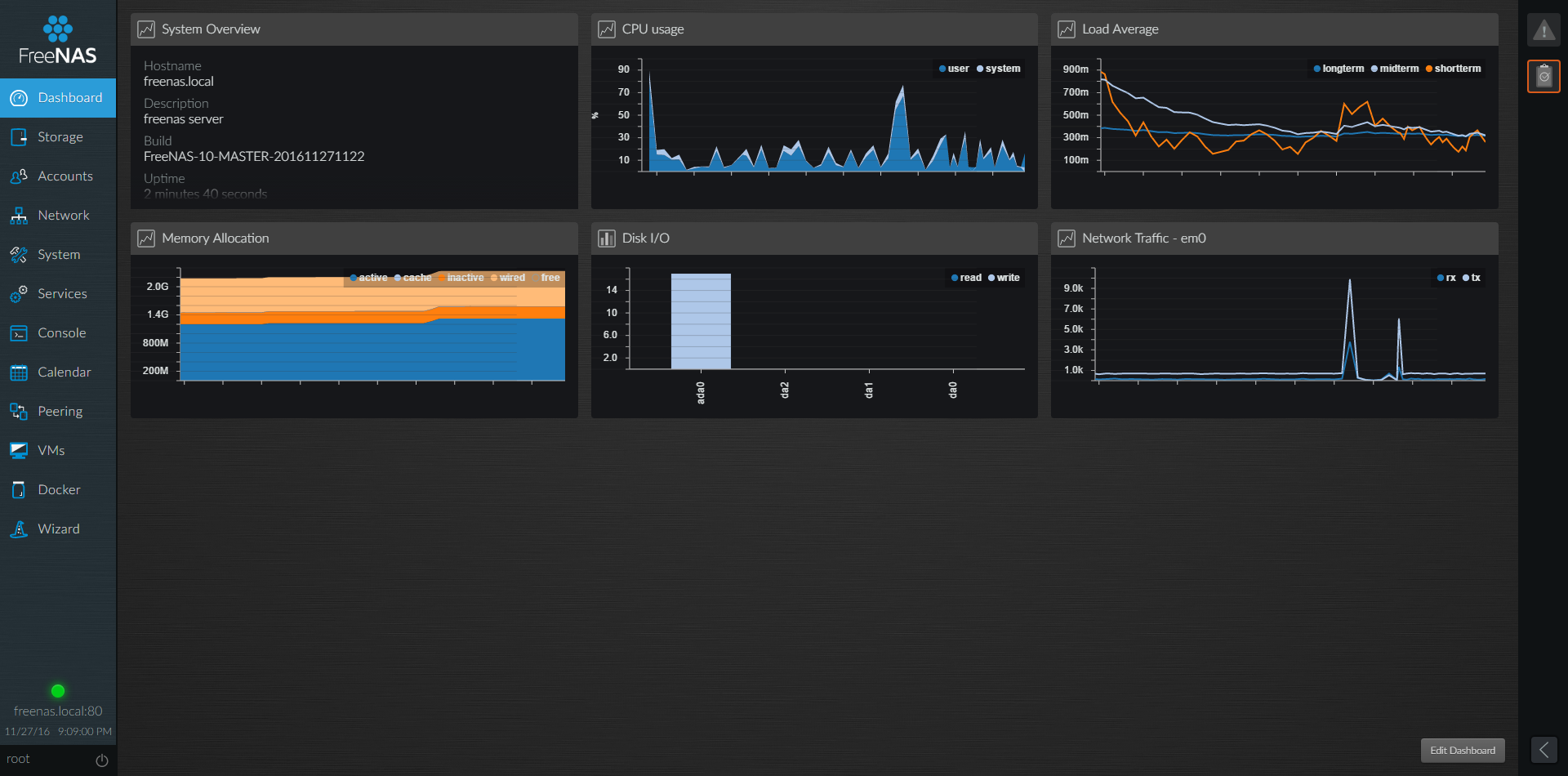
disclaimer: The product is actively developing and all the information provided below is relevant as of the date of this writing - 11/28/2016
')
So, who now can not wait to test a completely sane and relatively working version - download the latest Nightly-build - https://download.freenas.org/10/MASTER/latest/x64/ or from the official site , where we will be presented the essence of the release in one phrase - not for production

They warn us that this version of FreeNAS is not for production (not for production) - not just like that. I constantly keep track of updates and read reviews about a particular build, and in the last months of project activity I managed to catch lost docker containers, virtual machines that refuse to work, a falling GUI, and many other unpleasant moments that are inevitable on the beta stage of development.
Interest has not disappeared? Then we continue.
The current version of FreeNAS-10-MASTER is based on FreeBSD 10.3-STABLE and has an extremely nice user-friendly interface, the highlights of which are shown in the video (I recommend starting at 4:47).
Since the release of the FreeNAS 9.10 version, the system requirements have increased slightly. Minimum system requirements for running FreeNAS 10:
Recommendations for RAM:
I noted * a few important points, I would like to clarify them.
- "The device is now 32GB (up from 16GB). The absolute minimum is still 8GB " - this means that now you need at least 32GB for the boot device, the absolute minimum is still at 8GB. a source
- if you need all the advantages of ZFS and FreeNAS - the recommended starting memory is 16GB, the recommended type of memory is ECC and this is not discussed only if the value of your data is different from 0 and you “store all the eggs in one basket”, in the rest In some cases, you can use non-ECC memory at your own risk!
If the system requirements seem to be all clear and understandable, then the selection of iron for correct operation can cause difficulties. In case of such problems, you can refer to FreeBSD Hardware Notes , where the supported devices are detailed. The project also has a forum and even a Russian branch where they can help you with this or that question concerning FreeNAS.
Let's go over the menu items of the new webGUI Freenas 10 (the pictures are clickable):
After logging in to the address of the machine or freenas.local, we are greeted by a simple Dashboard , which can be customized to your liking.
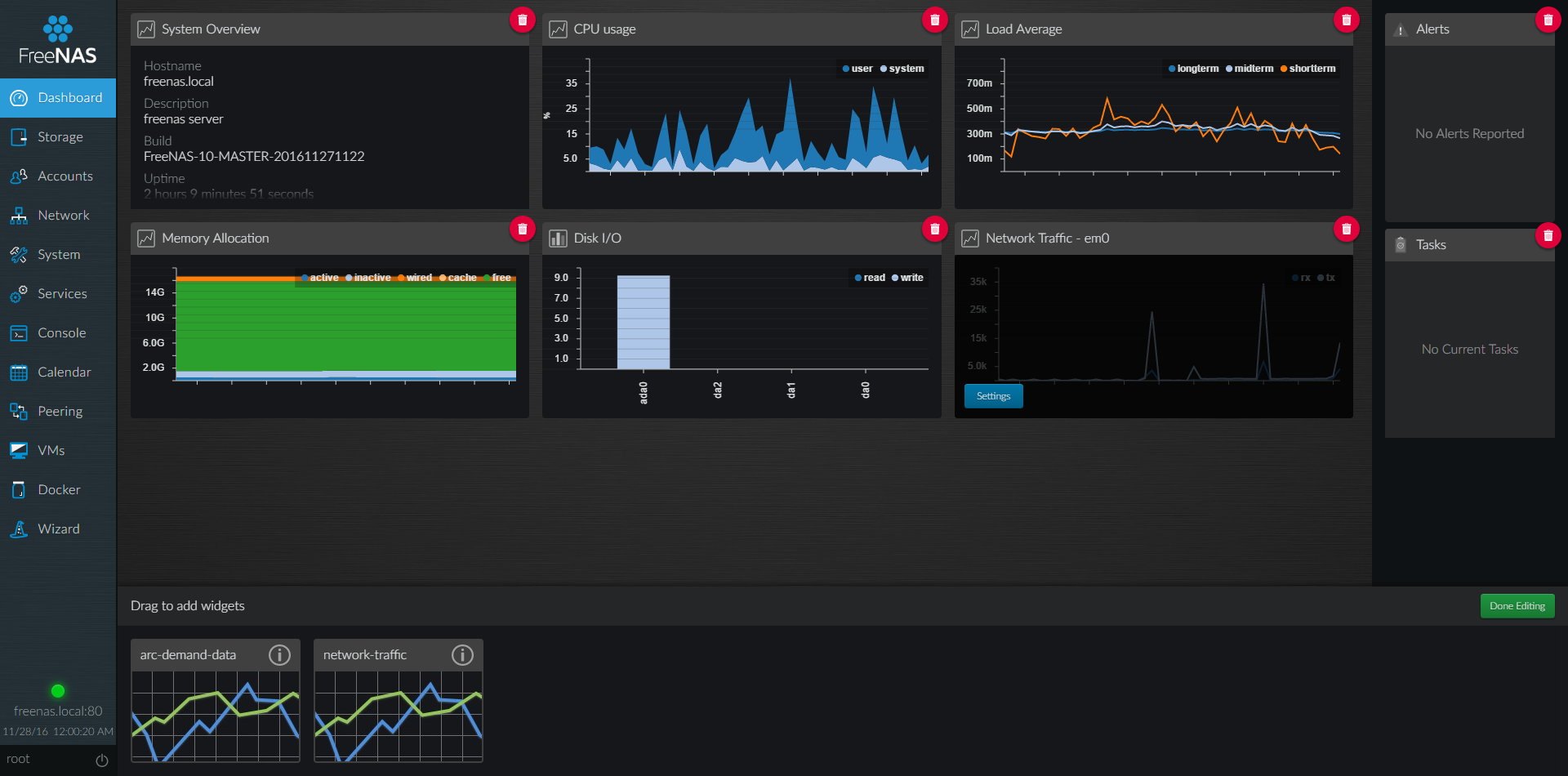
In the Storage menu you can conveniently configure an array and configure file balls; the developer recommends using datasets instead of directory-sharing.
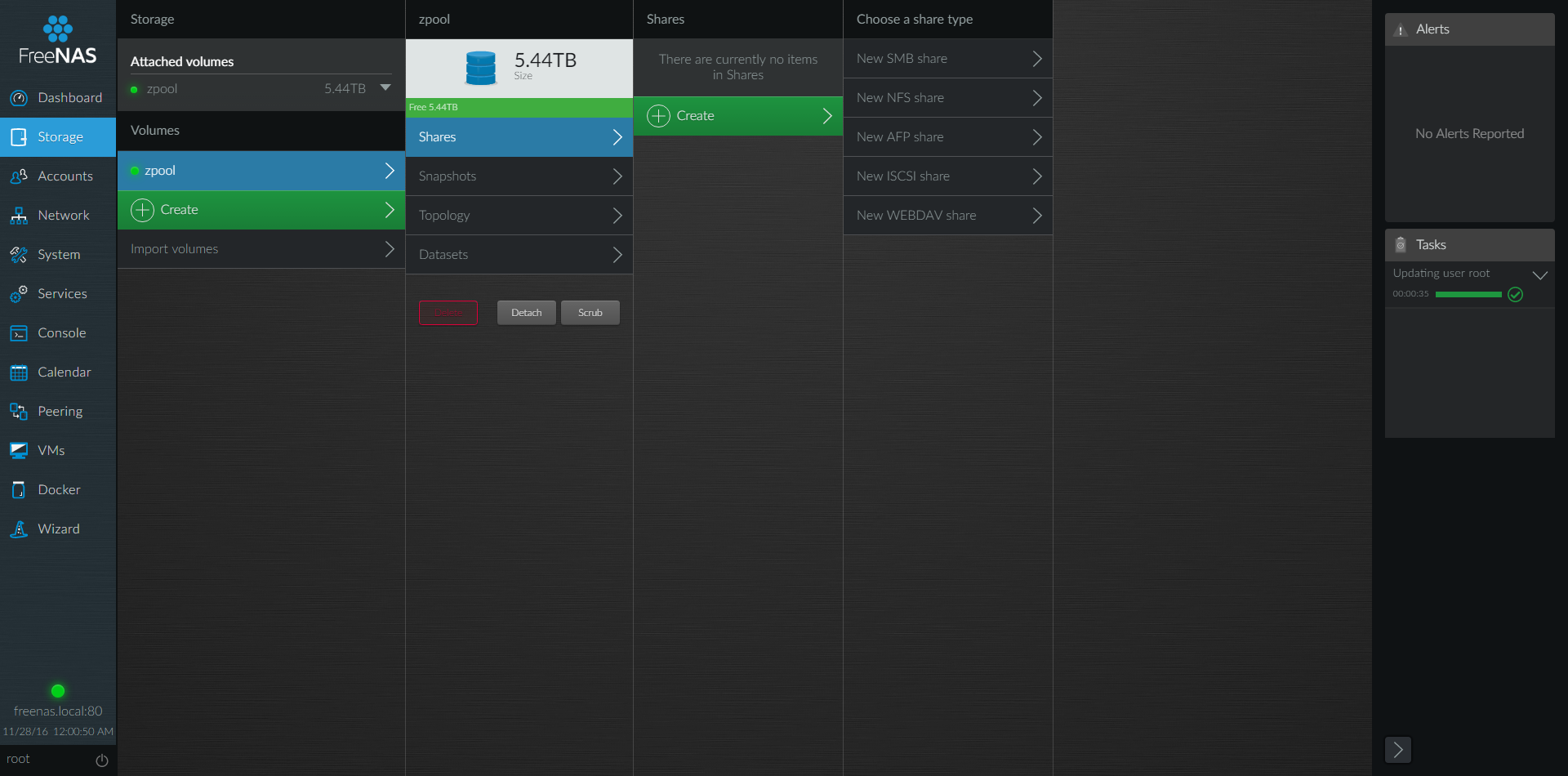
Further, in the Accounts menu, we can configure users and their groups, as well as the ability to connect various Directory Services.

In the Network menu , we can configure network interfaces, create VLAN, LAGG, BRIDGE.

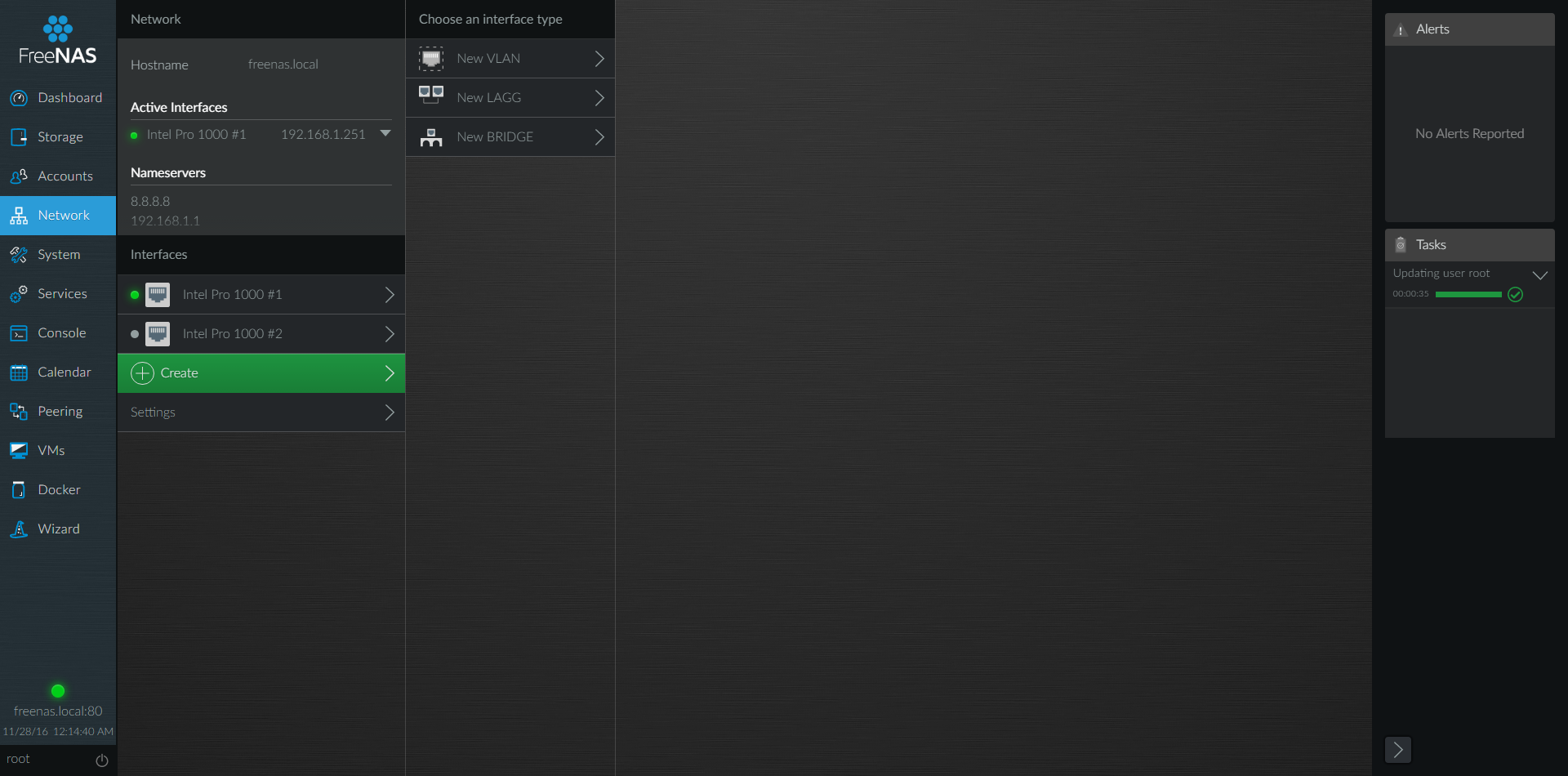
The System section will allow you to customize our system in more detail: view statistics, change the host name, select a pool for downloading (helps with unsuccessful updates), update, time zone and time, access to the web interface, certificates, email notification, and will give the opportunity to send a bug to the developer.

The Services section will lead us to the basic file transfer, system management and balloon services.
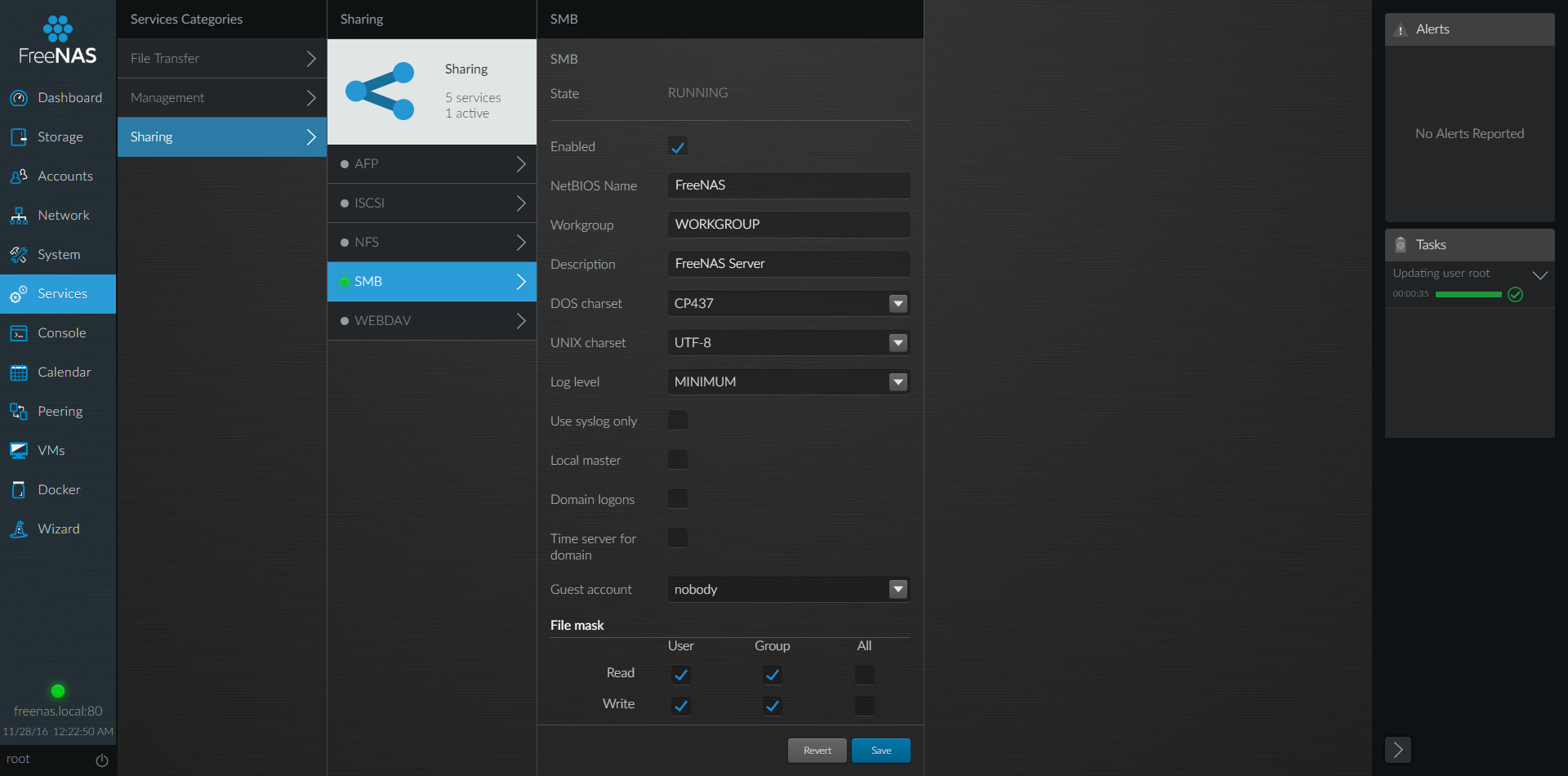
By the way, I managed to easily raise my old home UPS FSP VESTA 600.

The Console section allows you to access FreeNAS CLI directly from the browser or to the shell .
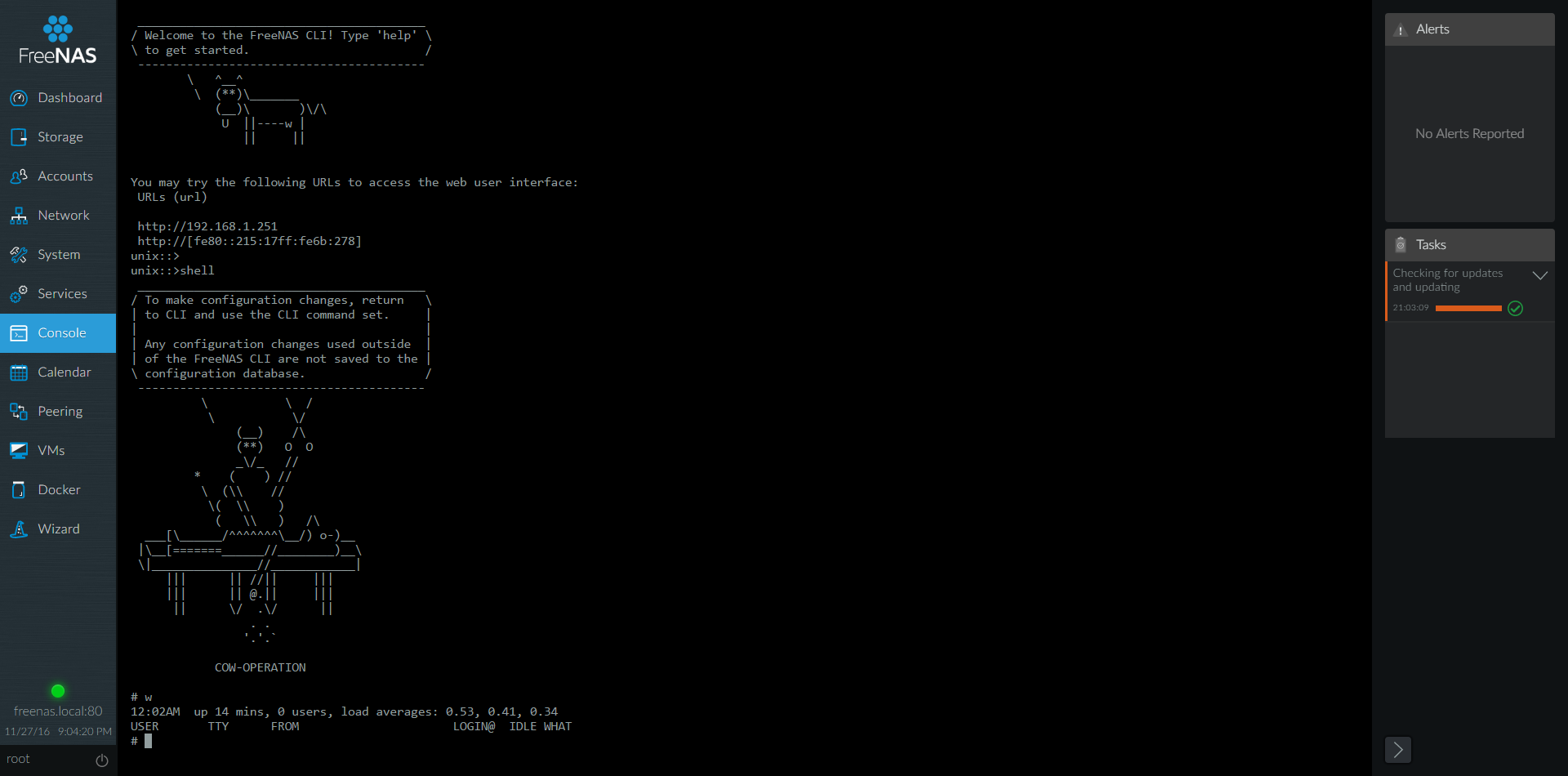
Calendar will essentially be a scheduler, where you can flexibly configure the schedule for maintenance and diagnostics of the storage (regular smart check, schedule check for updates, creating snapshots, rsync, replica).

In the Peering section, you can set up communication with other machines or with amazon-s3.

In the VMs section, you can manage virtual machines.

Docker is not forgotten by all, and you can manage containers in the appropriate section, which can be extremely useful.
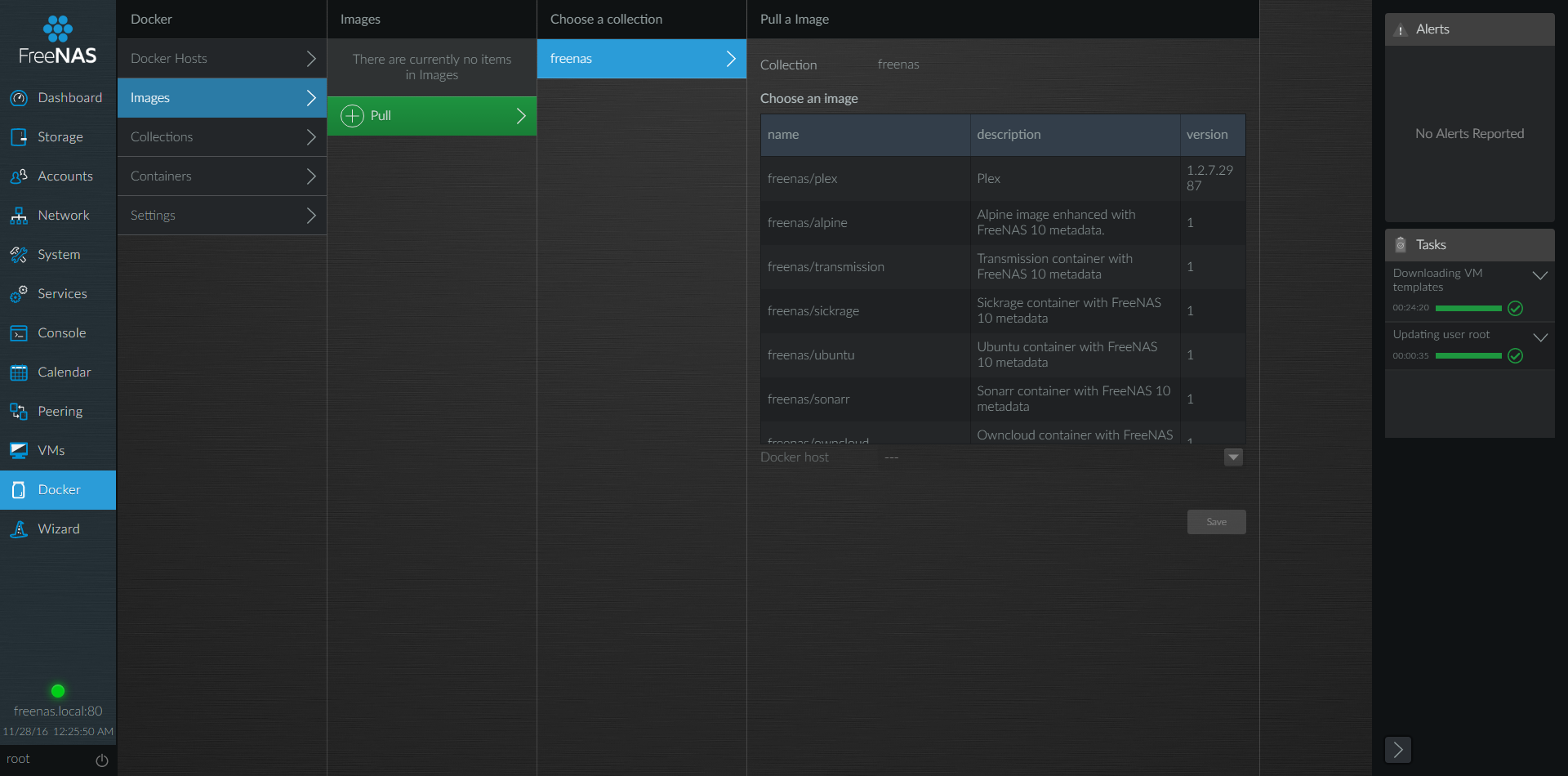
In the latest editions appeared Wizard - assistant for the initial setup of the repository.
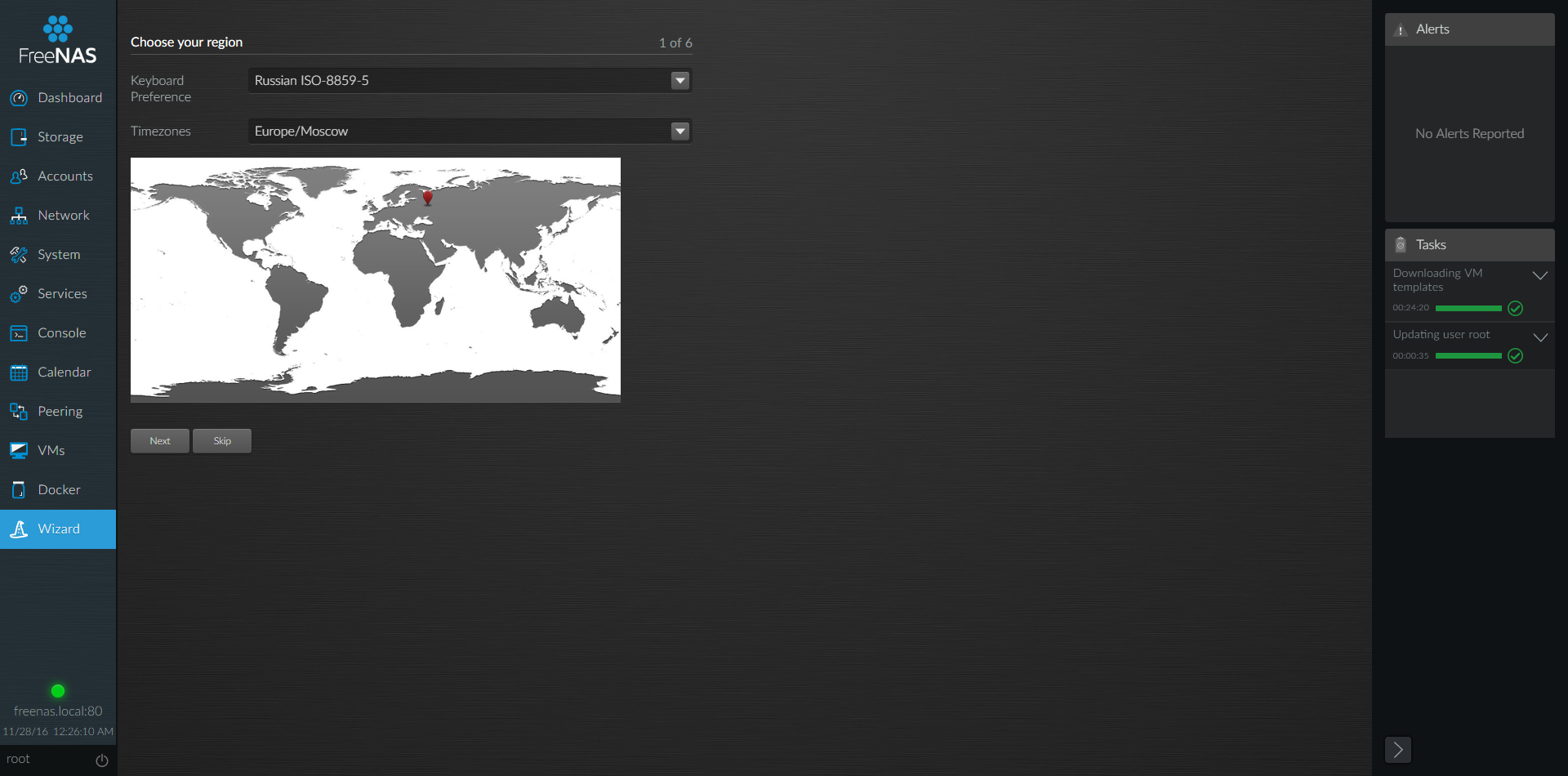
A more detailed description of some of the functions is in the video:
There are many enterprise-ready storage systems on the market, such as QNAP, NetApp, Synology, etc. Some of them have thoughtful and convenient interfaces, but the new FreeNAS 10 has turned out to be a very beautiful, convenient and user-friendly person, but the number of bugs and planned features is quite large today. If you look at the official bugtracker , then you can see the approximate completion date of work on the release version - " In the period of about 3 months (02/20/2017) ". From the current shortcomings, it is immediately apparent that it is impossible to upgrade from the 9.X branch to beta 10.X, but the developers plan this function closer to the release, unless of course such a “transition” is possible at all.
In general, look, study, test and do not forget to unsubscribe about bugs.
To date, the aforementioned product of collective labor has grown to BETA2 and is already slowly moving rapidly toward its release . If you are wondering what the developers were “trying to do”, welcome to cat.

disclaimer: The product is actively developing and all the information provided below is relevant as of the date of this writing - 11/28/2016
')
So, who now can not wait to test a completely sane and relatively working version - download the latest Nightly-build - https://download.freenas.org/10/MASTER/latest/x64/ or from the official site , where we will be presented the essence of the release in one phrase - not for production

They warn us that this version of FreeNAS is not for production (not for production) - not just like that. I constantly keep track of updates and read reviews about a particular build, and in the last months of project activity I managed to catch lost docker containers, virtual machines that refuse to work, a falling GUI, and many other unpleasant moments that are inevitable on the beta stage of development.
Interest has not disappeared? Then we continue.
The current version of FreeNAS-10-MASTER is based on FreeBSD 10.3-STABLE and has an extremely nice user-friendly interface, the highlights of which are shown in the video (I recommend starting at 4:47).
Since the release of the FreeNAS 9.10 version, the system requirements have increased slightly. Minimum system requirements for running FreeNAS 10:
- 64-bit processor
- system with boot support via legacy BIOS or EFI
- 8 GB RAM *
- 8 GB USB stick or DOM or CF (not recommended) *
- at least one data storage disk
- Ethernet port for network exchange
Recommendations for RAM:
- memory must be calculated from the condition of 1-2GB RAM on 1TB of storage
- if ZFS deduplication is needed, then we consider 5 GB of RAM per 1TB of deduplicated storage
- if you plan Active Directory with a large number of users, then you need an additional 2 GB of RAM for the internal winbind cache
- if you plan on using iSCSI and performance is not critical, then install at least 16GB RAM, if you need performance - at least 32GB RAM
I noted * a few important points, I would like to clarify them.
- "The device is now 32GB (up from 16GB). The absolute minimum is still 8GB " - this means that now you need at least 32GB for the boot device, the absolute minimum is still at 8GB. a source
- if you need all the advantages of ZFS and FreeNAS - the recommended starting memory is 16GB, the recommended type of memory is ECC and this is not discussed only if the value of your data is different from 0 and you “store all the eggs in one basket”, in the rest In some cases, you can use non-ECC memory at your own risk!
If the system requirements seem to be all clear and understandable, then the selection of iron for correct operation can cause difficulties. In case of such problems, you can refer to FreeBSD Hardware Notes , where the supported devices are detailed. The project also has a forum and even a Russian branch where they can help you with this or that question concerning FreeNAS.
Let's go over the menu items of the new webGUI Freenas 10 (the pictures are clickable):
After logging in to the address of the machine or freenas.local, we are greeted by a simple Dashboard , which can be customized to your liking.

In the Storage menu you can conveniently configure an array and configure file balls; the developer recommends using datasets instead of directory-sharing.

Further, in the Accounts menu, we can configure users and their groups, as well as the ability to connect various Directory Services.

In the Network menu , we can configure network interfaces, create VLAN, LAGG, BRIDGE.


The System section will allow you to customize our system in more detail: view statistics, change the host name, select a pool for downloading (helps with unsuccessful updates), update, time zone and time, access to the web interface, certificates, email notification, and will give the opportunity to send a bug to the developer.

The Services section will lead us to the basic file transfer, system management and balloon services.

By the way, I managed to easily raise my old home UPS FSP VESTA 600.

The Console section allows you to access FreeNAS CLI directly from the browser or to the shell .

Calendar will essentially be a scheduler, where you can flexibly configure the schedule for maintenance and diagnostics of the storage (regular smart check, schedule check for updates, creating snapshots, rsync, replica).

In the Peering section, you can set up communication with other machines or with amazon-s3.

In the VMs section, you can manage virtual machines.

Docker is not forgotten by all, and you can manage containers in the appropriate section, which can be extremely useful.

In the latest editions appeared Wizard - assistant for the initial setup of the repository.

A more detailed description of some of the functions is in the video:
findings
There are many enterprise-ready storage systems on the market, such as QNAP, NetApp, Synology, etc. Some of them have thoughtful and convenient interfaces, but the new FreeNAS 10 has turned out to be a very beautiful, convenient and user-friendly person, but the number of bugs and planned features is quite large today. If you look at the official bugtracker , then you can see the approximate completion date of work on the release version - " In the period of about 3 months (02/20/2017) ". From the current shortcomings, it is immediately apparent that it is impossible to upgrade from the 9.X branch to beta 10.X, but the developers plan this function closer to the release, unless of course such a “transition” is possible at all.
In general, look, study, test and do not forget to unsubscribe about bugs.
Source: https://habr.com/ru/post/316382/
All Articles